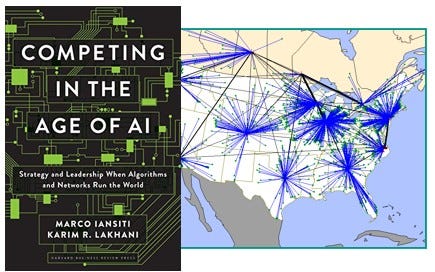Supply Chain Network Design: LLMs, and the AI Factory
In May, I had a chance to talk about the future of Supply Chain Network Design in a webinar with Ganesh Ramakrishna hosted by Primary.vc.
This is a big topic that will continue to evolve. This post will have some initial thoughts. I plan to explore this topic as part of a research effort with some students and industry partners.
LLMs and Network Design
I’ve heard many ideas about the potential for LLMs to help with network design. These ideas range from using LLMs to analyzing the output of the model (including the age-old goal of explaining why the model did what it did— why it used the Atlanta warehouse and not the one in Chicago), suggesting scenarios to run, automating the model set-up, suggest potential problems with the data, and so on. These are all great ideas. I’m unsure how these ideas will shake out. But I will follow and report on the progress here.
However, the current out-of-the-box LLMs can already help with network design. My working hypothesis is LLMs increase your programming skills by one to three levels on a ten-point scale, for example.
Data cleaning, the most time-consuming part of modeling, should get easier. You can write the code to query, prep, and clean the data faster. I’ve seen cases where some simple Python code could speed the process, but the syntax holds the team back. That barrier is lower now.
In addition, LLMs should help your team think through tricky model issues and get new ideas— just like using LLM as an intern you can use to ask questions.
AI Factory and Network Design
The book Competing in the Age of AI is my go-to recommendation for understanding how businesses should think about AI. The book was written before LLMs, so it applies to many AI technologies.
A key concept in the book is the AI Factory. The basic idea is that a company should use data and algorithms to inform and make decisions throughout the organization. The book argues that an AI Factory has three basic layers:
A data layer so everyone in the organization can share and access the data they need.
An algorithm layer to maintain, test, and share the algorithms
A software layer to deploy the technology to the business users.
Supply chain network design is built to be part of an AI factory:
It uses data from many sources, so you need to pull this together. It also cleans and provides context to the data. It also creates and maintains data not found anywhere else in the organization, such as costs for lanes you don’t currently use or new production capabilities. The data from the design team is valuable to other parts of the organization.
The algorithms (location, flows, sourcing, routing, inventory, etc.) and commercial solvers for network design are standard. Your advantage with your AI Factory is stitching these together for your business.
Network design models have always been used for various problems: strategic location of facilities, how products should flow, deciding where to make products, understanding risk, determining where to invest capital, understanding emissions, etc. These different uses have different users within the organization. A good software layer allows you to deploy these applications in a way that is appropriate for each user.
The more effort you put into making network design part of an AI Factory, the more value you’ll get from it.




